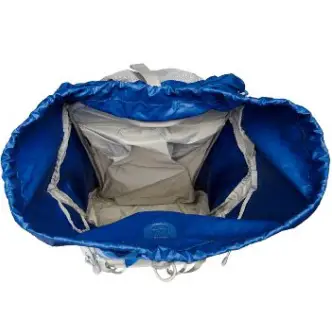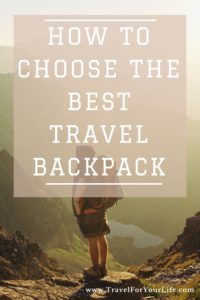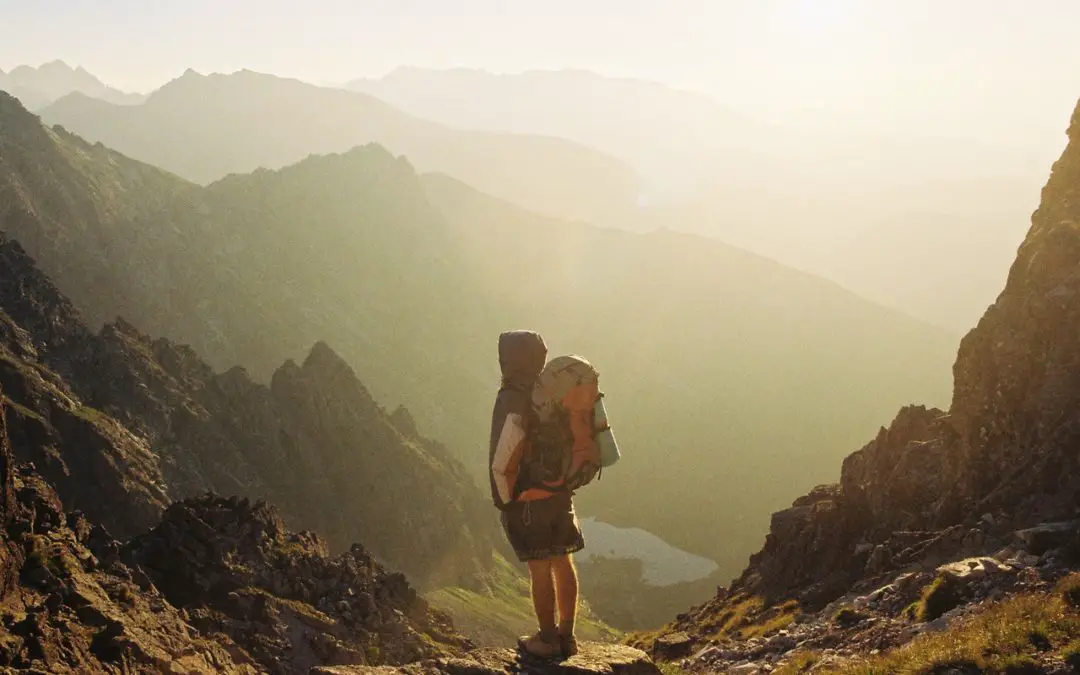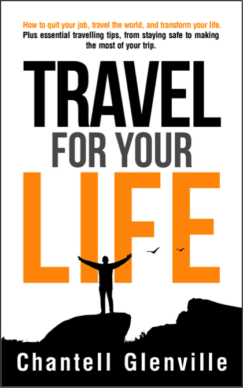Choosing the best travel backpack is one of the most important decisions you will make when preparing for your trip. I strongly suggest, for your own sanity, that you travel with a backpack rather than a suitcase unless you are planning on staying in one location for the whole time you’re away.
If you’re moving around there will be many instances where you will have to get bags on and off boats, or through corridors on trains and having your bag on your back makes life so much easier. It’s also a lot easier when you find yourself having to walk for ages to find a hotel; some towns don’t have taxis and a long walk is the only option. I’ve had to do this with a backpack in a full-on rainstorm. A suitcase with wheels would never have made that journey.
Even the largest travel backpacks don’t actually fit that much in and it is wise to be conscious of the weight of your bag when packing for long-term travel. Once you’ve packed everything into your backpack, make sure you can lift the bag, and if at all possible try to make it light enough that you can lift the bag over your head. You may have to do this on numerous occasions to get your bag into a luggage rack, so it’s important you only bring the backpacking essentials.
A lot of airlines also charge extra if your bag is more than 15 kg (33 pounds), so that’s a very helpful weight to keep under. For this reason I purposefully didn’t buy the biggest bag I could, even though I knew I’d be traveling for a long time.
I’ve traveled with three different types of backpack over the years now; one that was ok, one I hated with a passion and one I love, my current backpack. So you don’t end up with one you hate these are the key features I’d look for now to avoid getting another devil bag. Finding the best backpack for traveling is important.
Criteria for Choosing the Best Travel Backpack
Top-loading vs. Front-loading
Top loading backpacks look like the image below where essentially the bag is a bit like a giant sack you shove all your clothes down into. The only way to get clothes out of the bag is then to pull them out from the top opening. Not so great if the thing you want is at the bottom of your bag.

Most bags like this do have a little zip opening section near the base of the bag which makes it slightly easier to access things, especially if you plan your packing and put items like underwear there. The little zip opening section at the base is just that though, a little zip opening section. It doesn’t increase ease of access to your possessions that much more. Top-loading bags make it hard to get to your stuff and there is no point in even trying to keep your possessions folded and organised neatly in a bag like this. That said, this isn’t the bag I hated. When I had a bag like this it was ok. It was a pain to get my stuff out but since you know there’s no chance of keeping the bag organised there is something nice about knowing you can just throw everything in. Makes packing to leave places a lot quicker and easier. Just shove it all in and you’re off.
For many years these were the only type of backpack available. If this is the type of bag you have knocking about at home it will be good enough to take with you on your travels. It may cause you some irritation at times but it will suffice.
If you need to buy a new one anyway though I’d strongly suggest getting a front-loading backpack. Theses backpacks have a zip all the way along the bag so you can fold the front half of the bag back and see all your clothes easily, like in the photo below.

This style of backpack makes it much easier to get to everything you want in your bag as you can see all your clothes rather than having to spend 15-minutes with your hand in the depths of your bag feeling like you’re playing a game of lucky-dip. If you’re buying a new bag for your travels, get a front-loading one.
But not all front-loading bags were made equal. Onto the devil bag.
Types of front-loading backpacks
The second time I ever traveled, I had a backpack that became the bane of my existence (I would include a photo but it seems the rest of the world concurs with me on how horrible it is and there is no longer any trace of it ever having existed online). I thought I was being so smart in buying it. It was 70L but only when fully expanded. There was a zip running round the whole edge of the bag that if undone would release extra material to take the bag to its full capacity. This seemed great to me. I’m one of those people who really struggles to leave spare space in a bag of any kind. Whatever the size a bag is, I will fill it. The expandable section therefore seemed perfect for me. It was like I’d found a way to lie to myself about the bag’s size.
But somethings are better in theory than in practice.
When packing a front-loading bag, you undo the zip all the way down, fold back the top half of the bag and pack everything flat along the bag’s base (the part that goes on your back when carrying the bag). How deep this base is matters. If it’s shallow, every time you unzip the bag all the way down all of your stuff is going to topple out everywhere. It’s like playing a never ending game of Jenga, which you stand no chance of winning, with your belongings every time you want to get something out of your bag.
That was the problem with my expandable bag, the base was REALLY shallow. Nothing would stay in when I unzipped the bag and it made it really hard to keep things organized or pack in a hurry. Since realising what a difference this makes to the ease of use of a backpack I’ve noticed this is frequently the case with a lot of non-expandable backpacks too.
Always check how deep the base of a backpack is. I’d have prefered to have had a top-loading bag than the one with a shallow base any day. At least with the top-loading one your things will stay in the bag.
Does it have a day-pack and what’s the day-pack like?
You will need a daytime backpack when travelling. Pockets and handbags will not suffice for everything you do during the day. You may go on long walks or treks where you need to carry jumpers or water, do multiple activities in a day and so need changes of clothing on you or be on long journeys where you want to make sure you’ve got enough entertainment options close to hand (and enough clothes so you won’t freeze to death when the standardly sub-zero temperature aircon gets blasted into whatever mode of transport you’re on). For all these reasons and more you’ll need a day-pack/small rucksack.
A lot of big backpacks come with these but sometimes they’re not very good. Some are so small as to be almost entirely pointless and others are just not very well made or really, really ugly.
For me the key features these need to have are:
-
- Be large enough to actually carry any entertainment I may want, changes of clothing and my valuables (so I don’t have to put them in my big bag which is frequently separated from you on long journeys). Especially important to have all this space for long flights.
-
- Have a padded compartment at the back for a laptop or tablet (depending on which I’m traveling with. If you’re travelling with a laptop, make sure the day-pack is actually big enough to fit this in. A lot aren’t).
-
- Some form of compartments, whether that’s a inside the bag or pouches on the outside, just something so everything isn’t lose in there.
-
- A clip at least at the top of the shoulder straps that goes round my body but also preferably at the bottom of the bag too so that I can secure the bag to me with the clips.
Hip-straps
You need your backpack to be comfortable as you never know how long you might have to walk with it. How comfortable the bag is will be determined by a number of factors, such as where it sits on your back, where the bag’s design means weight is distributed in it when full and one of the most important ones, the material of the straps of the bag.
For years I always had backpacks with thick clumpy straps. The clumpy straps on the shoulders weren’t so bad, but the hip-straps always being so clumpy meant they might as well not have been there and just got in the way.
The hip-straps are included on backpacks to help distributive the weight of the bag across your body but some are so bulky they don’t actually bend properly around your hips, just jut out in front, ready to knock things over and cause havoc whereever you walk. For the most comfort when travelling make sure the material of these straps BENDS. The straps should sit snugly on your hips. My current backpack is the first one I ever found that did this, and I love it dearly for it.


Coverable straps
You can travel on some airlines without the shoulder straps of your bag being tied up or covered but a lot of companies get a bit funny about it, worrying the lose ties will get caught in conveyor belts and the like. For easy I’d suggest getting a bag where there is a piece of material that pulls up and can be zipped round the straps, covering them and turning your backpack into a holdall. As per the below.

Below is my current travel backpack. It is by far and above the best travel backpack I’ve ever had and it comes with a LIFETIME guarantee. Osprey will repair any damage to the bag, whatever the cause, no matter how long you’ve had it and if they can’t fix the problem they will replace the bag instead.
I spent HOURS in the outdoor shop I bought my backpack in trying on different ones for comfort, testing out how all the features of each bag worked. I spent so long there, another customer asked me to advise them on bags assuming I was a member of staff. Whilst I did this I didn’t look at a price tag once. Your backpack is probably the most important item of travel kit you will buy and you don’t want to buy a poor quality one and have it break on you in a country where it’s hard to buy a replacement. Saving even £50 ($75) even isn’t worth it when you think about the fact that this is the thing that is going to be with you every day and carry all your possessions. Decide which you think is the best travel backpack and then work out the money later.
If I were to do things again, I would switch to a smaller version of my bag now so that I only have a carry-on bag. After a while it gets kind of annoying having a big bag and I think I would feel a lot more free with a smaller one. Plus I’ve got more used to having less possessions as time has gone on so my comfort level with having even less on me is now higher.
If you want to pack light too I’d suggest the below, with a stuff pack (a bag that folds down on itself into a little pouch) as shown in the second photo as your daypack (Yes, I’m a fan of Osprey. They make great quality bags, that have the functionality I want, and come with, as I mention above, a lifetime guaranteed. They may be expensive but not when you factor in that it may be the only backpack you ever need to buy.)
Like it? Pin it.

Related Posts
How to Choose the Perfect Travel Phone
It can be incredibly useful at times to have a functional phone when you travel. That way you have access to Google Maps, can call your accommodation if you’re delayed or can use apps such as Google Translate so you have a clue what’s going on around you...







0 Comments